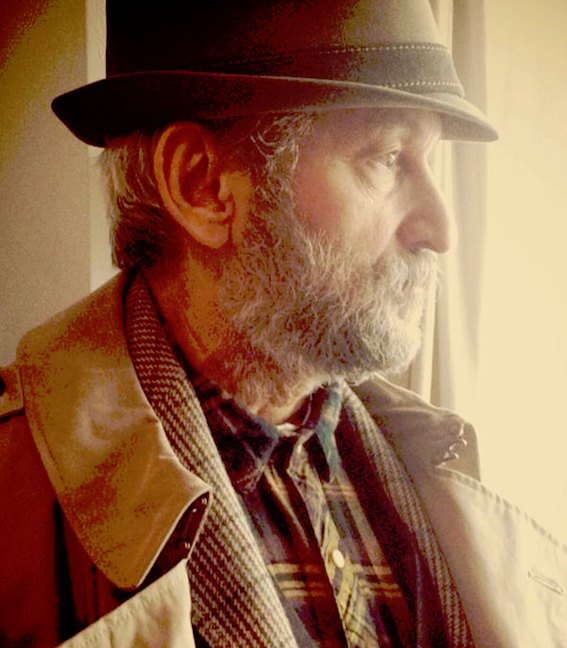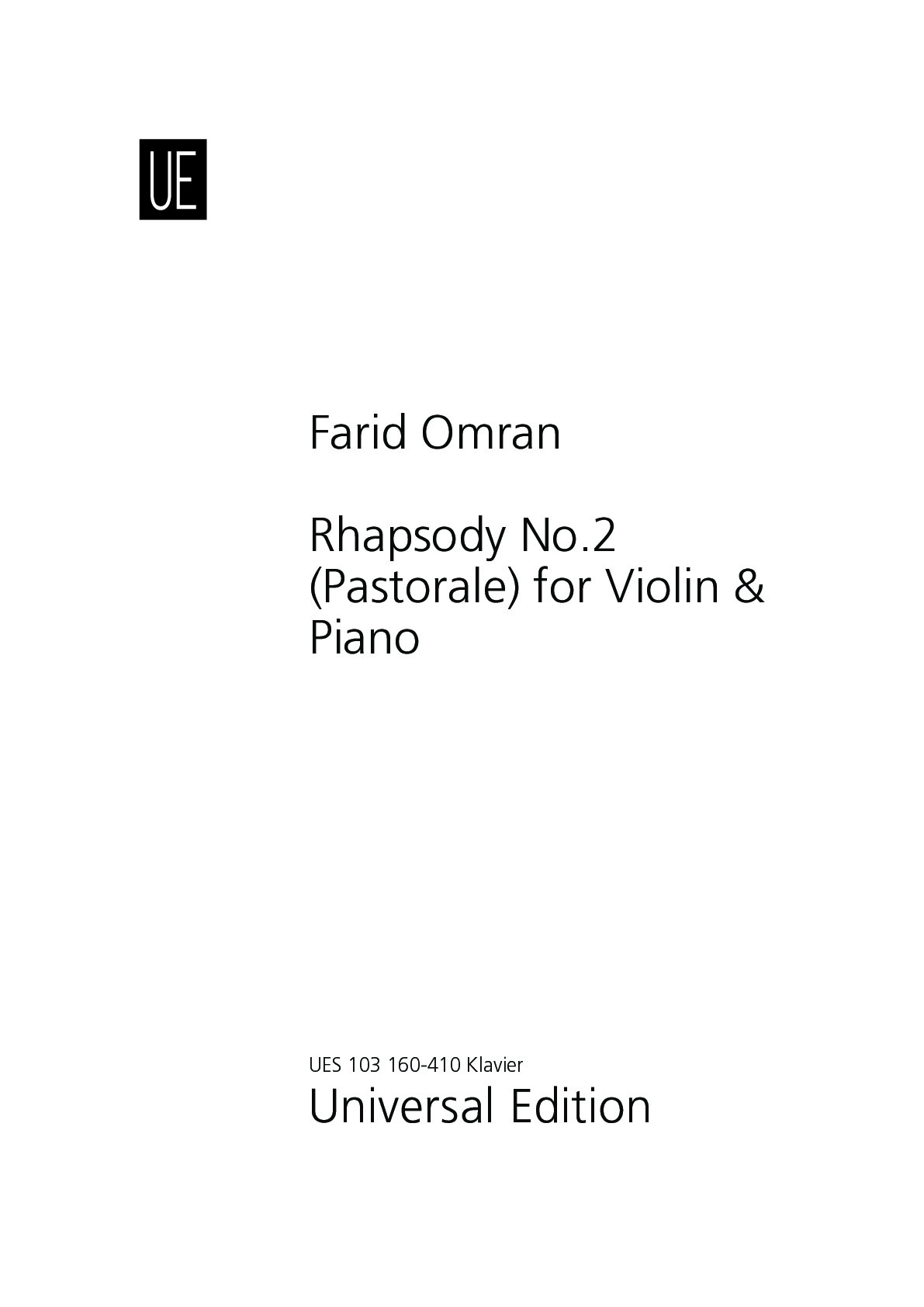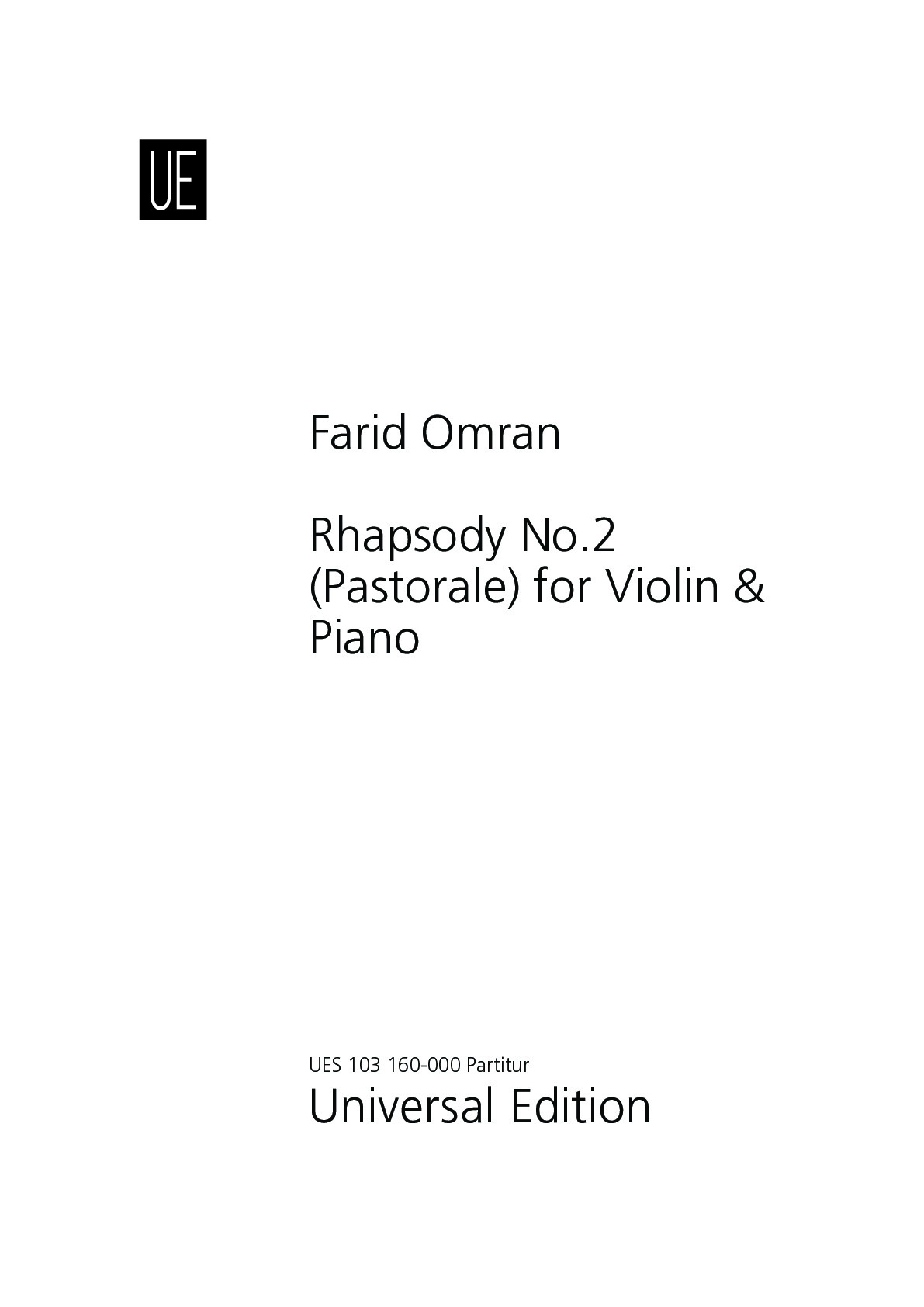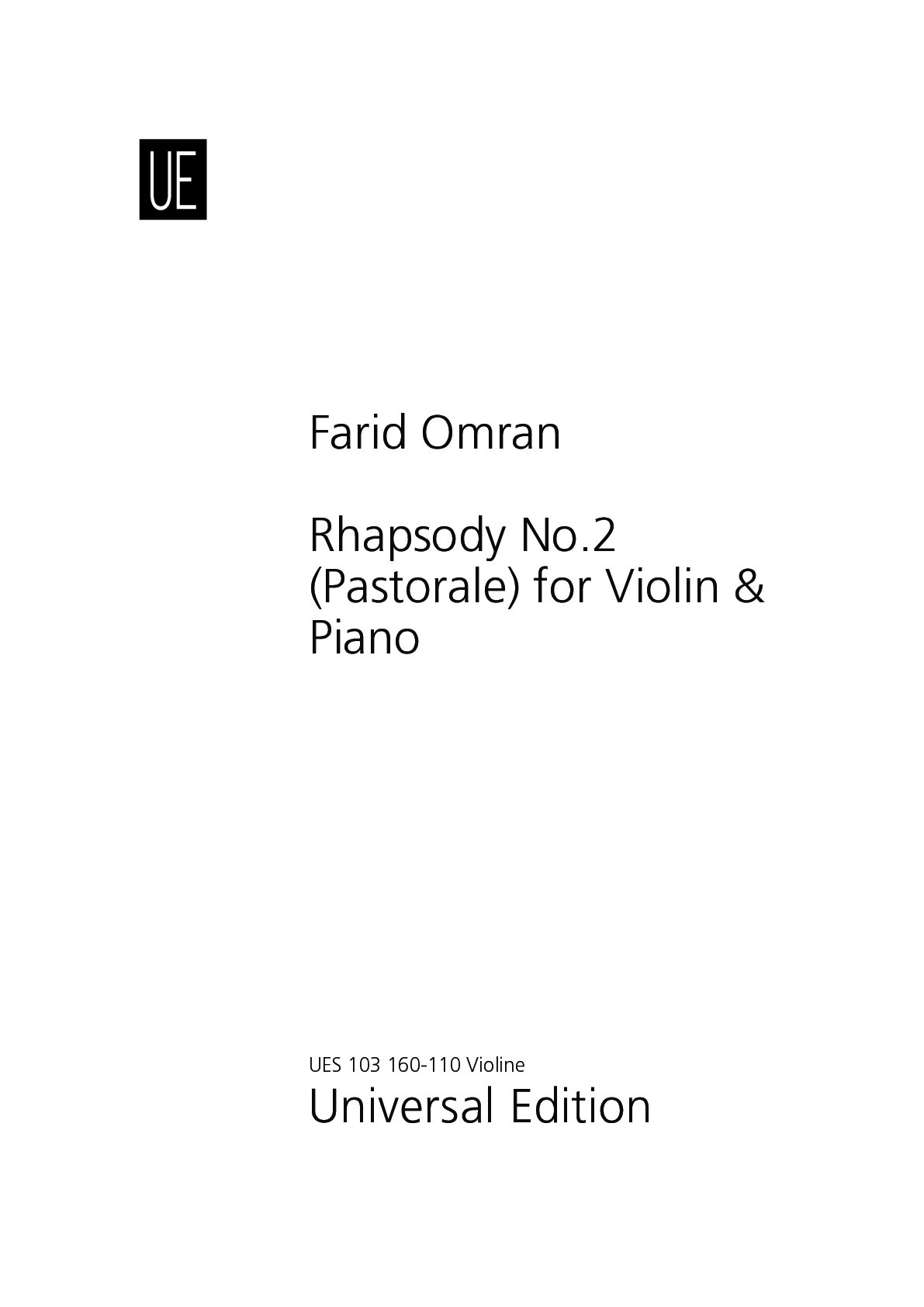

Farid Omran
Rhapsody No.2 (Pastorale) for Violin & Piano
Duration: 7'
Instrumentation details:
piano
violin
Rhapsody No.2 (Pastorale) for Violin & Piano
Translation, reprints and more

Farid Omran
Klavier (Rhapsody No.2 (Pastorale) for Violin & Piano)Type: Stimme

Farid Omran
Rhapsody No.2 (Pastorale) for Violin & PianoType: Dirigierpartitur

Farid Omran
Violine (Rhapsody No.2 (Pastorale) for Violin & Piano)Type: Stimme
Sample pages
Audio preview
Work introduction
Rhapsody No.2 for Violin and Piano
Like much of Omran's music, Rhapsody for Violin and Piano began its life as a solo piano piece, composed in 1989. In the preface to the original version, the composer writes:
“Rhapsody for violin and piano is an homage to Bela Bartok, who was one of the pioneers paving the way for folk and peasant music to have a say in the classical tradition. Iranian folk music is very rich and varied, and not too much work has been done on this inexhaustible source. Being faithful to tonal music myself, it was a good occasion for me to compose a piece that might give an idea to the listener about Iranian folk tunes.”
The folk tune in the centre of the rhapsody, its main theme, is called “Hey yar, hey yar,” which translates to “My love, my love.” It's a song from the Luristan province, a green but rugged land in western Iran, nestled in the heart of the Zagros mountains, and home to several nomadic and semi-nomadic tribes, whose impassioned lifestyle and bravery in battle is legendary. The opening, with its sizzling minor seconds, and the chromatic runs of the violin, creates an atmosphere of mystery that shrouds the scene like the morning fog in the mountains, out of which, like a figure stepping out of the mist, the theme makes its first appearance on the piano, accompanied by the same minor seconds of the introduction, before being taken up by the violin. Although abounding with rustic gaiety, the folk song in Omran's treatment acquires a certain edginess, and a sense of unease brought about by the syncopated rhythms and polyphonic writing, and the incessant dialogue between the two instruments, neither one willing to relinquish the leading role. The lyrics to the song may provide us here with a clue to the origins of this unease: It's the song of a man who is coming to town to claim his bride. He is coming to take her away, and makes it understood that he won't take no for an answer. Just in case there is going to be trouble, he is not coming alone:
Go shout it in the town, let the whole world know
I'm coming to take my love
No one in my way dare say a word
I'm coming to take my love
My love, my love, I'm coming to take my love
With a hundred and thirty riders, I'm coming etc.
I'm a warrior if need be, I'm coming etc.
With a dagger in one hand, a rifle in the other...
The undercurrent of danger and aggression that permeates this and many other songs from this region should not come as a surprise, since folk music is a mirror that faithfully reflects the lives of the people to whom it belongs, and danger and violence is a part of the nomad's life.
It is then the violin's turn to introduce a second, contrasting theme, which is not a known Persian folk song, but --and here the influence of Bartok is again apparent, it sounds as if it were. This is accomplished by the skilful use of a characteristically Persian tetrachord. A tetrachord is a collection of four consecutive notes, like a mini scale. The western major scale is made by stacking two identical tetrachords CDEF and GABC. A common tetrachord in Persian and other oriental music is CD-flatEF. In the traditional Persian music it's tetrachords, and not eight-note scales, that play the central role.
With the two themes given, we arrive at the development episode, and this is the other crucial insight of Bartok, namely that to integrate folk music fully into the classical music language, one has to extend to it the notion of development familiar to the sonata form, which consists of breaking up the themes in the exposition, reducing them to small melodic or rhythmic figures, which are then altered, repeated and recombined in novel ways by the composer. This is precisely what happens to the main theme in the rhapsody. The repetitions raise the temperature by quite a bit, a passage of descending chromatic thirds on the violin hints at the sound of laughter, and the two instruments join in to take the piece to its dynamic climax. The folk tune then returns on the piano, and the violin jumps in to start a three-part stretto, where the three strands of the same melody, two in the piano and one in the violin, make entrances that are out of phase with each other and thus form a musical braid. A moment of calm is then reached, and the piano leads us, via an introduction, to the second part of the piece, which in the words of the composer, is a Samaa', or dervish dance, the kind of dance still practiced in the monasteries belonging to various mystic sects all over Iran, where groups of men, and sometimes women, dance with increased abandon to the beat of Daf, a finger drum in the shape of a large tambourine, until they reach a trance-like state which for them is the union with God. Here Omran makes use of the so-called “Bulgarian” rhythm, where the eighth notes in a 4/4 measure are grouped as 3+3+2, made famous by Bartok, who composed six dances “in Bulgarian rhythm” as the climax to his monumental Mikrokosmos. At least one other great composer of Eastern origin, namely Khachaturian, makes frequent use of this particular rhythm in his works. Finally calm returns, and we find ourselves back in the Zagros mountains, shrouded in fog once more, but now with the violin in a trance, murmuring to itself the unforgettable rhythm of the Samaa'.
Shadi Tahvildar-Zadeh
What is necessary to perform this work?
Piano and Violin grades should be as per Dip ABRSM (Associated board of Royal School of Music) for Violin and Piano performance or higher.
